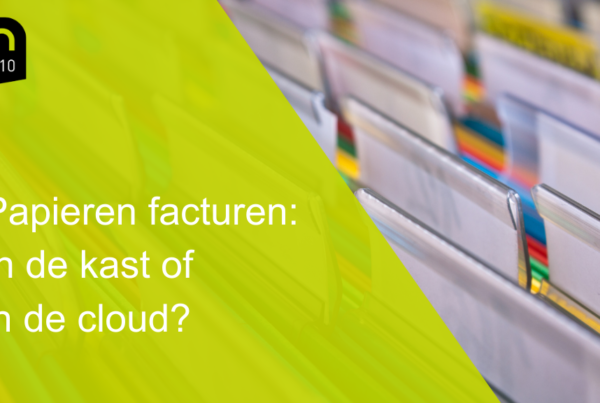We notice that, the terms digital and electronic invoices, are regularly confused. In most cases, people mean the same thing, namely moving a paper process to an automated process. There are, however, important differences, particularly in the processing of both in the accounting. In this blog we explain both terms and explain the differences.
Confusion
E-invoices, PDF invoices, scanning paper invoices, XML, and UBL. All different terms that one associates with digital and electronic invoice processing. You come across them in whitepapers, blogs, at trade fairs, on websites of partners and of competitors where the distinction between the different terms is often unclear. We can immediately clarify the first term for you, the e-invoice is the official abbreviation for the electronic invoice. Very simply put, it is a digital invoice that is made for automatic processing. So it comes down to this:
- Digital invoices: all forms of invoices that are not on paper and that ‘people’ can read.
- E-invoices: digital invoices that are processed electronically in your accounting system from an automated system.
The above distinction does not yet provide a clear answer to the question of what the difference is between digital and electronic invoices. For this we first look at the different forms of digital invoices.
Different forms of digital invoices
Digital invoices exist in three different main forms: a scanned paper invoice, a digital invoice in PDF or Word format and the electrical or e-invoice. The biggest difference is in the processing of the invoices and how many manual actions are involved. Every step that people take in automating the processing of purchase invoices means less processing time and therefore fewer costs.
1. The scanned paper invoice
You receive paper invoices by post. Scanning incoming paper invoices is a first step towards faster and more efficient invoice processing. After the invoice has been scanned, the invoice recognition software (OCR software) automatically recognizes the correct details of the invoice, such as supplier, invoice number, invoice date and the amounts. By reading this information from the invoice, the software can process an invoice faster in the financial administration; you do not have to enter it manually anymore. However, manual scanning of invoices can be a time-consuming, and above all, very challenging job. This can be made easier.
2. The digital invoice in PDF or Word format
Increasingly, suppliers offer their invoices digitally, usually in a PDF file and sometimes in a Word file. If you as a recipient have not yet automated the processing of purchase invoices, this will provide extra work; namely the printing of the digital invoice for the manual processing in your organization. In this case, only the supplier achieves a saving. Organizations that do use an automated system for processing incoming invoices, applaud the supply of a digital (PDF / Word) invoice. Incoming invoices, unlike paper invoices, no longer have to be manually scanned. The processing of the invoice is also the same as the scanned version of the paper invoice described above.
3. Electronic invoice or e-invoice
An electronic invoice is a form of a digital invoice, but conversely, a digital invoice is not directly an electronic invoice. We understand the confusion. Electronic invoices, also called e-invoices, are processed in a completely different way than the above forms. Where a digital invoice such as a PDF is actually nothing more than a paper invoice that is readable on a screen, an e-invoice is a digital message in computer language. This standard computer language is called UBL (Universal Business Language), where several versions have already appeared (1.0, 2.0 and 2.1). The e-invoice is a document, formatted in a standard format (a .XML file), which consists of fields that recognize software and can automatically process it in an accounting system. Because you as a ‘human’ cannot read the computer language in an e-invoice, you see that suppliers in practice, in addition to an e-invoice, automatically send a PDF.
The electronic invoice hardly contains any administrative actions and in practice requires only approval within the organization. This makes the electronic invoice the most automated variant for processing invoices.
Conclusion
So the biggest differences between the above forms of digital invoices are how they were drawn up by the supplier and how they enter into your organization. For you as a user it does not really matter how your invoices come in. It is more important for you that the various invoices can be processed as efficiently as possible within your organization, without the people who work with the system having to do different actions or using different systems to process the invoices.
Should a supplier ask whether they can now send the invoices via email, ask them in the first instance for a PDF file. That way you do not have to scan the invoice any more. It would be great if the supplier could also supply a .XML file, but the chances are pretty small as it is just a little too early for that (most supplies are not yet equipped to do so). By receiving as many invoices as possible via e-mail (as PDF), we are bridging the gap, by making the step towards electronic invoices a little bit more achievable. We cannot go fast enough, but history has shown us that in the long run it is better to take small steps at a time. We like to keep to that premise. Wondering if your organization is ready to take the step to digital invoicing? Read this blog, when you as an organization, could start digitizing your invoices.


